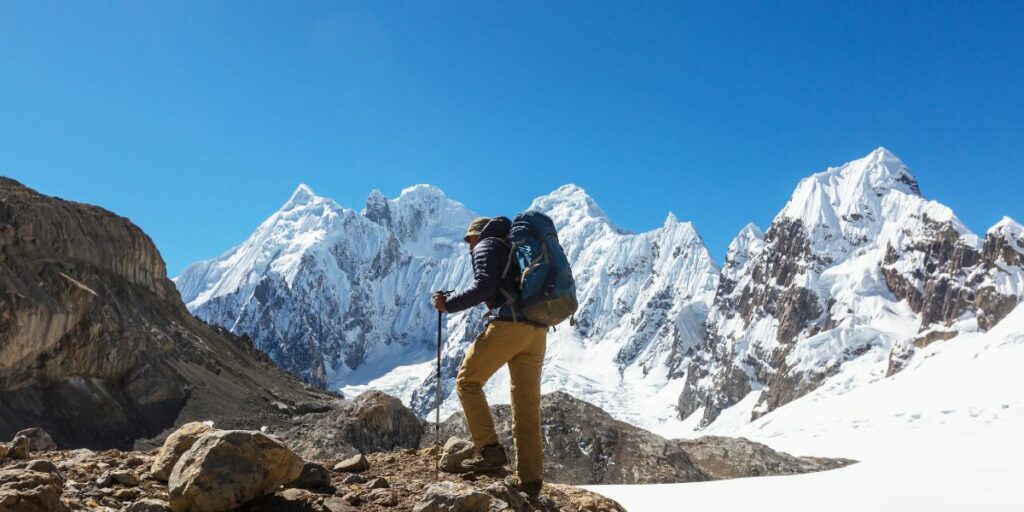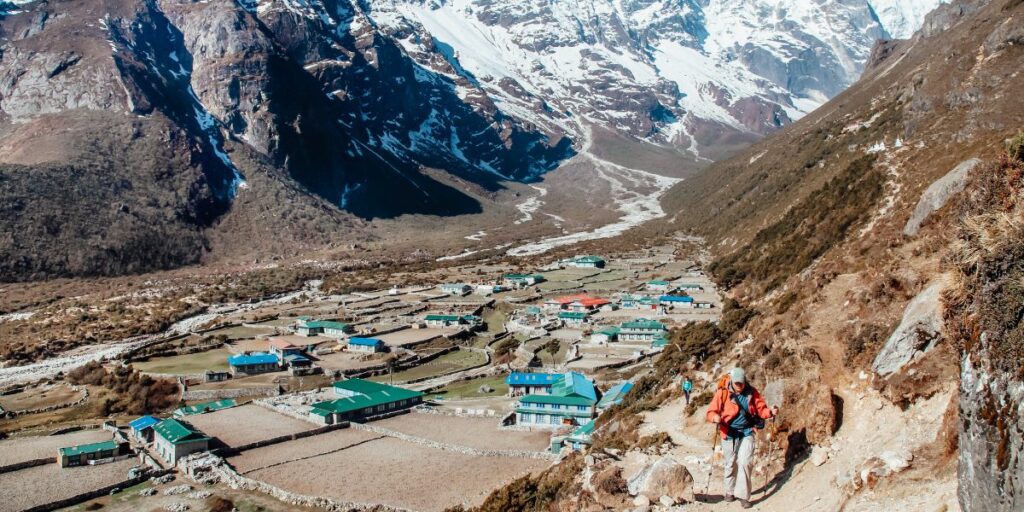Nepal’s New Everest Climbing Rules and Regulations for 2025/26
Mount Everest is the ultimate mountaineering challenge, drawing thousands of adventurers to its slopes yearly. However, the world’s highest peak is not merely a tourist attraction; it’s a formidable force of nature. Everest is not always as beautiful as it appears; it has claimed the lives of thousands of climbers over the years. In response to safety concerns and increasing traffic on the mountain, Nepal’s Tourism Board has introduced new rules to ensure climbers’ safety. So, if you’re thinking about climbing Mount Everest, make sure you are well-informed about these new regulations before you begin your journey.
The New Regulatory Framework
These new rules for Mount Everest climbing aim to ensure that only well-prepared and qualified individuals attempt the ascent, thereby reducing accidents and preserving the mountain’s fragile ecosystem. Understanding these guidelines is crucial for anyone planning to take on the world’s highest peak.
Experience Requirements – Tackling Nepal’s 7,000-meter Peaks First
The most significant change in Nepal’s new regulatory framework is the prerequisite experience requirement. As Mount Everest is one of Nepal’s 8,000-meter peaks, climbers are required they have high-altitude experience before obtaining an Everest permit.
- Aspiring Everest climbers must have successfully summited at least one 7,000-meter peak in Nepal.
- This regulation ensures climbers understand the challenges of high-altitude mountaineering in Himalayan conditions.
- This requirement serves as both a safety measure and a way to distribute climbing tourism across Nepal’s less-frequented but still magnificent peaks.
Mandatory Guide System

Solo expeditions on Everest are now strictly prohibited under the new regulations. Under the new regulations, all climbers attempting Mount Everest must be accompanied by qualified mountain guides. For expeditions to 8,000-meter peaks, including Everest, the rules now require a minimum ratio of one guide for every two climbers. Additionally, only those guides who possess verified high-altitude credentials and proven experience will be permitted to lead these expeditions.
Nepali Citizenship Requirement for Everest Guide
Under the new regulations, expedition leadership remains firmly in local hands. For climbing Everest, you need a Nepalese guide.
- Every expedition leader and mountain guide (including Sherpas) must hold Nepali citizenship.
- This requirement ensures local expertise and supports Nepal’s mountaineering economy.
- Foreign climbers must adapt to working exclusively with Nepali guides and expedition leaders.
How to Hire the Best Guide?
When choosing a guide for your Everest expedition, it’s essential to prioritize experience, certification, and reputation. With guides now mandatory, selecting the right professional is crucial. If you’re wondering how to hire the best guide, start by checking if Nepal’s Ministry of Tourism licenses them and has verified high-altitude experience.
- Verify their summit history on 8,000-meter peaks.
- Review safety records and client testimonials.
- Ensure they speak your language well enough for critical communication.
- Discuss their emergency protocols and experience with rescues.
Health and Financial Considerations
Climbing Mount Everest, often referred to as “ Sleeping Beauty,” has always required significant physical and financial preparation, but under the new regulations, these requirements have become even more rigorous. To prioritize climber safety and ensure responsible participation, Nepal’s Tourism Board has introduced stricter health screening and increased the overall cost of the expedition. Anyone planning to summit the world’s highest peak must be fully aware of both the medical prerequisites and financial responsibilities involved.
Medical Requirements
Medical requirements aim to reduce health-related emergencies during the climb and ensure only those physically capable attempt the ascent. Climbers must now meet specific health criteria before being granted a permit:
- Medical clearance is mandatory and must be issued within 30 days of the application.
- The certificate must explicitly confirm that the climber is fit for high-altitude mountaineering.
- Any pre-existing medical conditions that could worsen at extreme altitudes must be fully disclosed.
Breaking Down Your Everest Investment
The financial demands of climbing Everest have also risen significantly under the new rules. These rules reflect the government’s efforts to improve safety standards and manage the growing number of climbers more effectively.
- Permit fee increase: Royalties jump from USD 11,000 to USD 15,000 for autumn/winter seasons.
- Guide services: USD 35,000-65,000, depending on service level.
- Equipment: USD 8,000-12,000 for high-quality gear suitable for extreme conditions.
- Oxygen systems: USD 3,000-5,000 depending on flow rates.
- Insurance: USD 3,000-8,000 for comprehensive high-altitude coverage.
- Total cost range: USD 45,000-100,000+ depending on provider and services.
Budget expeditions to climb Everest still run USD 30,000+ but often compromise on critical safety elements that seasoned climbers strongly advise against. The cost to reach Everest Base Camp is around $1,000 to $5,000 per person, depending on the level of service and comfort desired.
The Ethical Climb: Environmental Considerations

The new regulations also address mounting environmental concerns. As per the updated Everest climbing rules, the climbers should use WAG (Waste Aggregation and Gelling) bags for human waste. Additionally, all equipment and supplies brought up must now be carried back down, with no exceptions. They should be appropriately disposed of, which will incur a certain charge.
Technological Advancements in Safety
In addition to regulatory changes, Nepal’s government has invested in modern technology to improve safety and monitoring on Mount Everest. With the challenges of high-altitude climbing becoming more complex, these technological upgrades aim to provide real-time information, faster emergency response, and better communication throughout expeditions.
- Helicopters equipped with RECCO detectors and radar-based scanners to locate climbers buried in avalanches or crevasses.
- Enhanced communication systems throughout major routes.
- GPS tracking requirements for all expeditions.
The Silent Warnings of Everest: Green Boots, Rainbow Valley, and the Death Zone
Above 8,000 meters lies what mountaineers call the “Death Zone”, an altitude where oxygen levels are insufficient to sustain human life for extended periods. The new climbing regulations acknowledge the extreme dangers of this zone, emphasizing stricter safety measures and preparedness. Yet, even with all precautions, the mountain’s lethal risks remain ever-present. Among the most haunting reminders of Everest’s deadly nature are the chilling landmarks of Green Boots and Rainbow Valley.
The haunting Rainbow Valley Everest refers to a section of Everest littered with the colorful jackets of deceased climbers. This grim landmark serves as a sobering reminder of the mountain’s dangers. Many bodies remain unrecoverable due to the extreme conditions. The famous “Green Boots” landmark refers to the preserved body of an Indian climber, easily recognized by his neon green boots. For years, his body served as an unintended trail marker on the main route to Everest’s summit.
Beyond 2025: Looking to Everest’s Future
Nepal’s new regulations represent a significant shift in how Mount Everest expeditions will operate. While some climbers may view these changes as restrictive, they ultimately serve to protect lives and preserve the integrity of one of the world’s most magnificent natural challenges. For aspiring Everest summiteers, the path to the top begins with careful preparation, respect for the new regulations, and a deeper appreciation for the progressive development of skills needed to safely conquer the world’s highest peak. By implementing these safety measures, Nepal aims to transform Everest climbing from a potentially chaotic tourist attraction into a more sustainable, safer, and professionally managed adventure that honors both the mountain and those who dare to climb it.
FAQ
What are the new rules for climbing Mount Everest in 2025/26?
Nepal’s new Everest regulations for 2025/26 require climbers to have prior experience on a 7,000-meter peak. Solo expeditions are banned, and qualified Nepalese guides must accompany all climbers. The regulations also include stricter health requirements, waste disposal measures, and increased costs.
Why do climbers on Everest follow the 2 p.m. rule?
The 2 p.m. rule ensures climbers descend by 2 p.m. to avoid running out of daylight or energy, which can increase the risk of accidents and exhaustion in a dangerous high-altitude environment.
Do I need prior experience to climb Everest under the new regulations?
Yes, climbers must have previously summited a 7,000-meter peak in Nepal to apply for an Everest permit, ensuring they have the necessary high-altitude mountaineering experience for safety.
Why is a Nepalese guide now mandatory for Everest expeditions?
A Nepalese guide ensures that climbers are led by experienced local experts who are familiar with the mountain’s challenges while also supporting the local economy and preserving mountaineering traditions. Mountain Routes has been offering certified Nepalese guides who adhere to the new regulations and prioritize safety and local expertise.
How does the “Death Zone” affect climbers on Everest?
The “Death Zone” above 8,000 meters has dangerously low oxygen levels, causing fatigue, impaired judgment, and increased risk of altitude sickness and other life-threatening conditions. Supplemental oxygen is crucial for survival.
